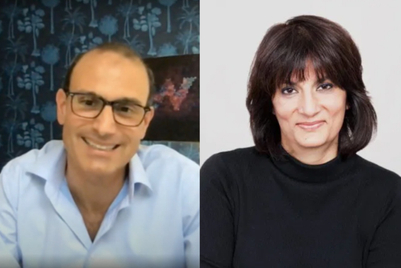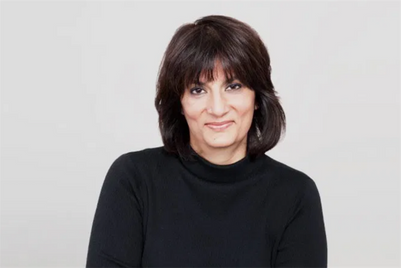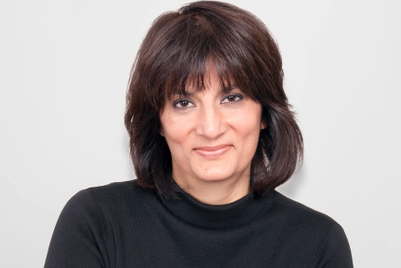
Devika Bulchandani is leading Ogilvy through a time of massive change.
After 25 years at McCann, Bulchandani joined Ogilvy in November as CEO of North America and global chair of advertising, leading the charge in the industry’s largest market and shaping the vision for creativity globally.
She’s part of a new leadership regime assembled by Andy Main, who joined the storied creative agency as global CEO last July, replacing four-decade veteran John Seifert.
Main’s background as boss of Deloitte Digital has marked a new era for Ogilvy, in which the agency has doubled down on specialties in PR, healthcare, experience and creative, while leaning into Ogilvy’s single P&L structure to offer best-in-class, integrated solutions for clients.
In addition to Bulchandani, Main brought on Geometry (now VMLY&R Commerce) finance chief Stacey Ryan Cornelius as global chief financial officer, Edelman vet Julianna Richter as global CEO of PR and influence, Accenture exec Steve Soechtig to lead its experience business and Leo Burnett’s Liz Taylor as chief creative officer — all in the past seven months.
(Ogilvy PR has just named Lisa Bright as global chief creative officer and Charlotte Tansill as global chief strategy officer)
Other leadership shuffles have come from within Ogilvy’s ranks, such as eight-year vet Carina De Blois, who replaced Lauren Crampsie as president of Ogilvy NY in May; Kate Cronin, who was promoted to CEO of Ogilvy Health after 12 years; and Liam Parker, who was promoted to chief client officer after more than 15 years at the agency.
Amid all this change, Bulchandani is conscious about leaning into Ogilvy’s heritage as she oversees its 18,000 employees in the U.S.
“I've been really deliberate in making sure I'm not trying to make Ogilvy into something else,” she said. “I'm learning about the culture, the people, the brand and the heritage and bringing out the best to move it forward. As a leadership team, we have talked about how important it is for us not to come in as outsiders and make people feel like they are not great and they don't have the potential.”
In that spirit, Bulchandani spent the first few months on the job “learning about the culture, people, brand and heritage to bring out the best moving forward.” The agency has also picked up a few new clients since she joined, including Zippos, Absolut Vodka, Enterprise Holdings and Pernod Ricard.
The wins have been across PR, creative, social media and brand strategy, areas the creative agency has bolstered under Main.
“Clients need multiple solutions,” Bulchandani said. “The epiphany for us is we need to be organized in the most agile and fluid manner to deliver those. A lot of the wins we're seeing in the marketplace is because we are operating differently from a P&L structure.”
But, on the creative front, Ogilvy still hasn’t made up for its 2017 loss of American Express, which it cut final ties with in November. Ogilvy’s revenues declined year over year in Q1 but is “certainly demonstrating an improving trend,” WPP chief financial officer John Rogers said on an April earnings call.
Winning big global clients is “absolutely priority number one” for Ogilvy, Bulchandani said, as more large marketers look to consolidate their business with a single agency network or holding company.
Another major area of focus is diversity, equity and inclusion. Ogilvy hasn’t shared diversity figures, but parent WPP reported in April that seven in 10 U.S. employees are white, a figure that jumps to 80% at management level.
While Ogilvy has brought on a diverse set of leaders in the past few months, including Bulchandani, she acknowledged there’s work to do internally from a hiring and pipeline perspective. But she also wants to push the agency to think about “exponential as well as incremental impact.”
“I feel a massive obligation to go beyond the internal people to start thinking about how our DE&I investments show up in our product,” she said. “We create culture. We are responsible for creating the stereotypes and biases we talk about. So what we are going to do about that is a focus we have now.”
She added that, as well as being the right thing to do, embracing a more diverse and inclusive culture “is very good for business” and “a growth opportunity for us and every one of our clients.”
(This article first appeared on CampaignLive.co.uk)


.jpg&h=334&w=500&q=100&v=20250320&c=1)

.jpg&h=334&w=500&q=100&v=20250320&c=1)
.jpg&h=334&w=500&q=100&v=20250320&c=1)

.jpg&h=334&w=500&q=100&v=20250320&c=1)











.jpg&h=268&w=401&q=100&v=20250320&c=1)
